
Discover Wildlife and Culture: Peru and Ecuador Ecotour Adventures | Travel Blog
Peru and Ecuador offer unmatched experiences for ecotourists and cultural travelers. Each destination has unique attractions from awe-inspiring Natural Parks to ancient archeological sites and vibrant cultural heritage.
These countries blend vibrant nature treasures with astounding biological richness. The perfect examples are Galapagos Island and Tambopata National Reserve. Two crown jewels of Latin America's top natural parks.
Explore the diverse ecosystems of the Pacific Ocean and Amazon Jungle, and marvel at their unique wildlife. Hike through the Andes and witness awe-inspiring seascapes. In every corner, stories of the past come alive through music, art, and food.
Table of content
Amazon Rainforest and Galapagos Islands : Havens of Biodiversity
The Amazon rainforest is a natural sanctuary and home to a countless range of wildlife species. Its dense vegetation, flowing rivers, and rich ecosystems make it one of the most biodiverse places on Earth.
This paradise offers incredible journeys into nature’s most fascinating realms along the Amazon river. Among these adventures are scenic river cruises, boat trips and on-foot jungle expeditions.
Similarly, the Galapagos Islands has a unique and diverse ecosystem, harboring numerous species. The archipelago hosts numerous species that thrive there that cannot be found anywhere else on Earth. This place is a true living laboratory of natural evolution.
Peru and Ecuador share a significant portion of this remarkable natural resource. From playful monkeys, colorful parrots and stealthy jaguars to marine iguanas, blue footed boobies and giant tortoises.
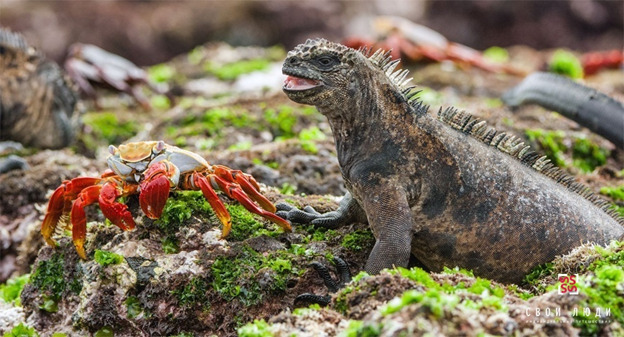
Wildlife and Culture in the Amazon
Beyond its natural wonders, the Amazon Rainforest reflects the original customs and traditions of its native social groups. These communities have coexisted with the forest and its elements for generations.
They are preserving sustainable practices and respecting their environment as though it were part of their family. Their deep connection to nature teaches outsiders how to preserve the world consciously.
Travelers departing from Peru or Ecuador can engage with these communities and learn about their way of life.
Activities such as foraging for medicinal plants and exotic fruits offer insight into their deep connection with the forest. They rely on nature as a source of healing.
You can reach Tambopata and Iquitos, two excellent examples, via a domestic flight from Lima, the capital of Peru. Alternatively, tourists can journey through the country, visiting highlighted attractions in the Andes and along the coastline. Afterward, they can reach these vibrant rainforest destinations.
Wildlife conservation remains a priority in the Amazon. Peru promotes strategies to safeguard biodiversity and indigenous territories.
These efforts emphasize the importance of preserving the Amazon for future generations and visitors. The ecotourism practices are vital, such as staying in beautiful ecolodges. Lodgings are built with local materials and designed with subtle colors and patterns that blend seamlessly into the natural landscape, minimizing disruption to wildlife.
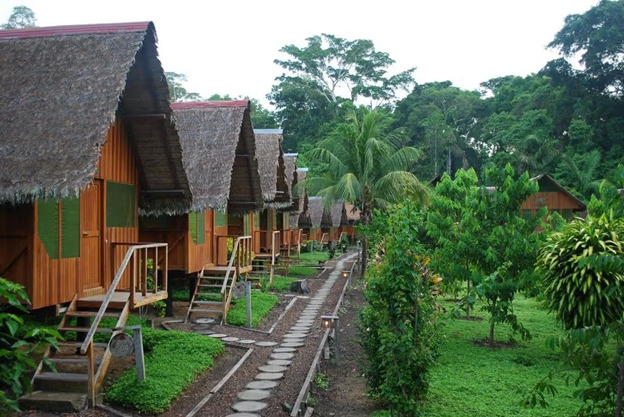
Exploring the Amazon
The Amazon River, a vital lifeline for the rainforest, originates from the Andes mountain ranges and high snow capped peaks. It is filled with nutrient-rich water that nurtures every plant and animal of this paradise. This abundant source supports the diverse ecosystems that thrive along its banks.
Visitors can navigate the river on traditional peke pekes or catamarans, just like the locals do. For a more comfortable journey, Immersive Amazon Cruises allow you to witness the majestic beauty of the jungle and spot the diverse wildlife.
Its blend of wildlife and scenes creates a destination that is both captivating and educational. Exploring this haven of biodiversity ensures memories that will last a lifetime.
The Andes: Majestic Peaks and Rich Traditions
The Andes mountain range, the world’s longest one,a vigorous marvel that creates breathtaking landscapes, from expansive high plateaus to towering mountain peaks and volcanoes. Within its territory, many ancient civilizations were established, and today, vibrant cultural hubs thrive there.
Peru and Ecuador boast some of the most stunning sections of this range, attracting ecotourism travellers and brave adventurers interested in preserved living culture, historical sites and outdoor challenges.
In Peru, the Andes harbor iconic landmarks like Machu Picchu Mountain . These sites reflect the legacy of the Inca Empire and its deep connection to the mountains and nature, viewed as sacred entities and the birthplace of many. These traditions have survived to this day and are an integral part of the cultural identity of a lot of families.
Ecuador's section of the Andes offers equally breathtaking experiences, like the Avenue of Volcanoes. This beautiful region is home to towering peaks such as Cotopaxi and Chimborazo, surrounded by diverse ecosystems. Ecuador’s national parks serve as refuges for wildlife, including condors, spectacled bears, and Andean foxes. The area is also rich in indigenous cultures, with communities that have preserved ancient traditions and a deep connection to the land, where nature and heritage have shaped their way of life for centuries.
The Andes are more than just their majestic treasures; every corner comes to life and is filled with color, thanks to the vibrant cultures of its people, including the Quechua, Kichwa, and Aymara. Their traditions offer a glimpse into the harmonious relationship between them and nature elements, like the famous Titicaca Lake in Puno.
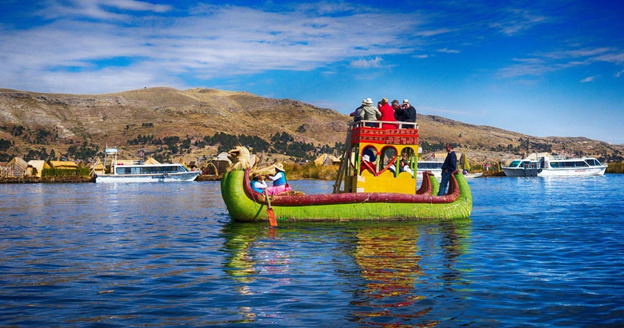
Wildlife and Culture Among the Peaks
The Andes also serve as a vital corridor for wildlife conservation in South America. Many national parks and protected areas, both government-managed and privately owned in Peru and Ecuador safeguard endangered species and delicate habitats. Extending into the transition zone to the Pacific and Amazon ecosystem.
These efforts help sustain the region's biodiversity while supporting sustainable tourism initiatives. In some cases, these initiatives respectfully pass through the heart of these areas, such as the Inca Trail to Machu Picchu; in other cases, they take place within them, as seen in the Colca Canyon in Arequipa.
Travelers can immerse themselves in the Andes’ rich traditions by participating in local festivals and workshops. Communities in Ecuador, and Peru often invite visitors to learn about their history, weaving techniques, and spiritual practices. These experiences highlight the deep cultural ties that define life in the Andes.
Peru and Ecuador’s Andes stand as testaments to the resilience and beauty of South American landscapes. Whether you admire towering peaks or join in traditional celebrations, this region leaves a lasting impression. To a lesser extent, other countries in the region also offer unique experiences along the Andes.
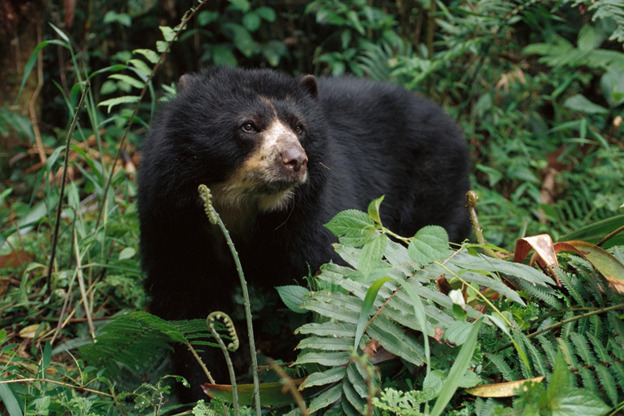
Ancient Wonders: Machu Picchu and Beyond
Machu Picchu, one of the New Seven Wonders of the World, stands as a breathtaking testament to Inca ingenuity. Located in the south - central region of Peru, this ancient citadel is a must-visit destination for those exploring Peru and Ecuador. Machu Picchu features perfectly preserved stone structures and a stunning sacred mountain backdrop. Its significance extends beyond its architecture and mysteries; it represents the harmony between humanity's creations and nature, planned to blend into the natural landscape.
This important relationship is the result of the Inca’s deep understanding of astronomy and natural forces. Their respect and adoration for these elements are evident in every stone of the agricultural platforms, streets, temples and plazas.
The journey to Machu Picchu offers more than just a visit to a historical site. One of the most popular routes to reach this iconic place takes you through the Sacred Valley of the Incas, plenty of charming villages, key attractions and activities.
Along the way, you’ll encounter vibrant communities and scenic views. Witness Andean locals practicing traditional weaving techniques in Chinchero, ingenious agricultural sites and experimental areas like the Moray archeological site and Maras salt mine.
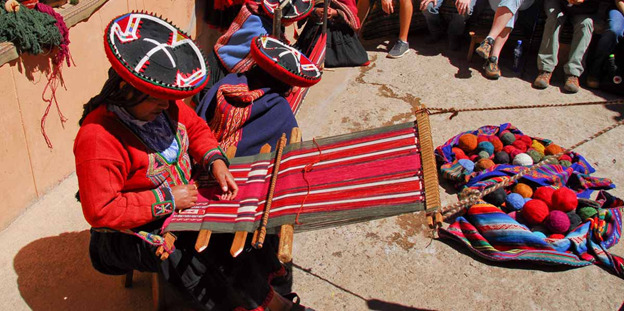
Exploring Beyond Machu Picchu and Galapagos Islands
While Machu Picchu and Galapagos Islands are the crown jewel, Peru and Ecuador offer other equally fascinating sites.
In Peru, the ancient City of Cusco once served as the political and spiritual heart of the great Inca Empire. Today, it is a UNESCO World Heritage Site that attracts visitors eager to learn about Inca culture and ancient history. Noteworthy sites include the temples of Qoricancha, Sacsayhuaman, Qenqo, Tambomachay, and Puka Pukara, all perfect examples of the exceptional engineering skills of that era.
Another UNESCO World Heritage Site and the gastronomical capital of Latin America is the enthralling city of Lima. It is renowned for its exceptional culinary offerings, historical buildings and ancient ruins located in the city center. Visitors can also descend into the catacombs beneath Lima on an intriguing underground tour.
Beyond Cusco, the Nazca Lines, massive geoglyphs etched into the desert floor, captivate the imagination. These mysterious shapes, best viewed from the air, continue to puzzle archaeologists. Exploring these ancient wonders adds another layer to your understanding of the ancient South American civilizations.
In Ecuador, the Ingapirca archaeological complex offers a glimpse into the pre-Columbian cultures of the region. This site, built by the Canari people and later expanded by the Incas, features impressive stonework and ceremonial structures. It provides a unique perspective on the blending of indigenous traditions and Inca influence.
Preserving the Past and Present
Both Peru and Ecuador are home to national parks that help preserve the region’s cultural and natural heritage. Machu Picchu itself is part of a larger protected area that promotes wildlife conservation. Peru agreed to collaborate on these preservation efforts.Visitors to these parks not only experience ancient wonders but also witness efforts to protect diverse wildlife species.
Local communities, deeply tied to their cultural heritage, actively engage in preserving both history and nature. By supporting sustainable tourism, travelers contribute to the protection of these incredible sites. The preservation of these ancient wonders ensures that future generations can continue to enjoy Peru and Ecuador’s wildlife and culture.
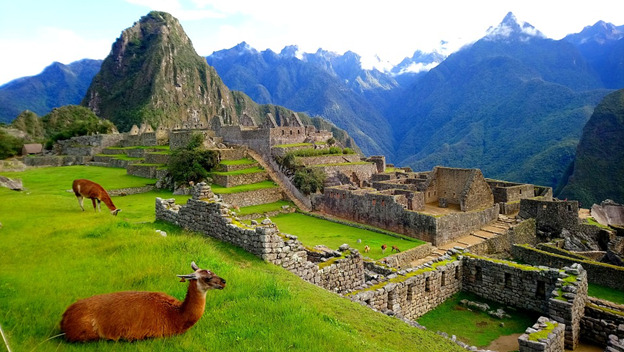
Cultural Encounters: Local Communities and Their Traditions
One of the most enriching aspects of exploring Peru and Ecuador is the chance to engage with local communities. These indigenous groups, many of whom reside in the Amazon Rainforest and high Andes, offer a glimpse into their timeless traditions.
People from remote villages, like those living in Lake Titicaca, showcase a unique lifestyle. The inhabitants of these sites live on handmade artificial islands and maintain daily habits that are truly one of a kind in the world.
Ancient communities offer a unique glimpse into their lives in the south of Peru, such as the Colca Canyon people. Impressive agricultural terraces line the edges of one of the deepest canyons in the word. These villages have preserved their traditions for centuries, adapting their lifestyles to the rugged landscapes.
In Peru, the Quechua people’s traditions are deeply intertwined with the land. Their connection to the sacred Andes mountains shapes their daily life, from agriculture to festivals. Travelers can witness the importance of their crafts, music, and language, all passed down for generations.
Ecuador, too, boasts a wealth of indigenous communities, including the Kichwa and Shuar people. Their sustainable practices and intimate knowledge of the jungle have enabled them to preserve their way of life.
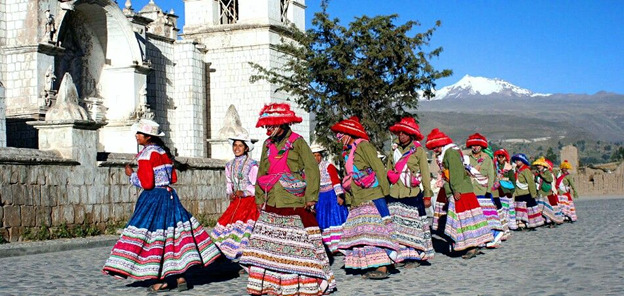
Traditions that Shape Life
In both Peru and Ecuador, local traditions are integral to the identity of the people. Agricultural practices, like the cultivation of coca leafs, potatoes, quinoa and maize, are not only livelihoods; they hold cultural and spiritual significance as well.
Ceremonies and festivals also provide insight into the cosmovision of these communities. From the Inti Raymi festival in Peru, celebrating the Sun God, to Ecuador’s indigenous rituals, cultural events honor both the spiritual and physical worlds. Participating in these traditions fosters a best understanding of the cultural fabric that unites these communities together.
Additionally, the local art and craftwork found in Peru and Ecuador reflects the profound connection to nature. Handwoven alpaca and llama textiles, intricate multicolored pottery, and beautifully crafted jewelry of gold and silver often tell stories of the land, animals, and local beliefs. These unique items not only preserve the heritage and artistry but also contribute to responsible tourism
Unveiling Nature's Riches and Cultural Legacies in Peru and Ecuador
Peru and Ecuador offer an incredible opportunity to immerse oneself in both nature and culture and practice ecotourism. From the Ancient Ruins of Machu Picchu to the biodiversity of the Galapagos Islands and the vast Amazon Rainforest, these countries provide travelers with an unmatched experience. Exploring these destinations allows visitors to connect with vibrant cultures, stunning landscapes, and unique wildlife, while also supporting the preservation of their rich heritage and ecosystems.


